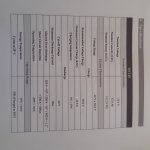The only logic I can see for "don't charge to 100% unless it's below 30%" is if there's some logic in the battery that only balances cells when it's below 30%, which is typically the opposite of what's normal - balancing happens on the higher end of things.
I suspect that this is just bad advice they were given from an overseas manufacturer, or a lost in translation from chinese to english thing, and now they're repeating it because they don't know better. Anyone who understands lithium batteries knows that the 30 to 80% window is the "happy spot", but there are no memory issues or anything like the old days of nickel cadmium etc that require "full cycles" anymore.
If it were me, I'd put it on a timer of some sort to time it to complete the charge to 100% a few hours before your planned departure time (to give it time for any balancing to happen), and then unplug, and go and enjoy your day. If it's above 30% at the end of your day, then just park it until next time, and repeat. Yeah, in a perfect world you only charge to 80%, but if you haven't got a lot of experience on this particular machine yet, you don't want to find out the hard way that that 20% was the 20% that got you through your entire day vs running out of juice early, and it's easier on a lithium battery to spend a few hours at 100% and then get depleted then it is for you to come up short and end up in a super-deep discharge situation.
Without doubt there will be cutoff circuitry in there to ensure the battery doesn't damage itself even if/when you do get down towards "empty", so dont overthink that either in the grand scheme of things, but still, if we're talking what's easier for the lifespan of the battery, 100% for a few hours and then a shallower discharge vs deep bottom discharge is preferential.






















